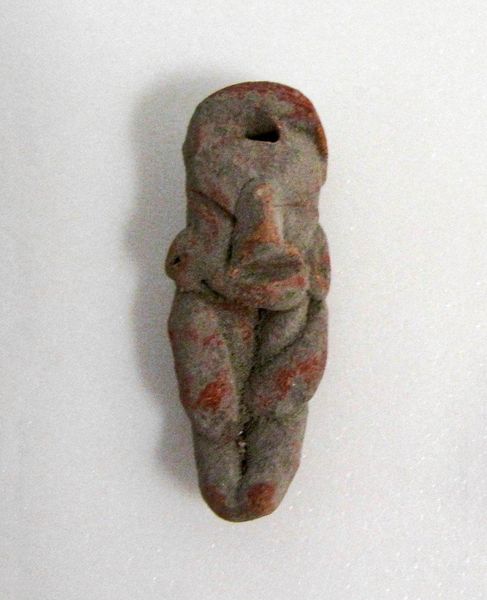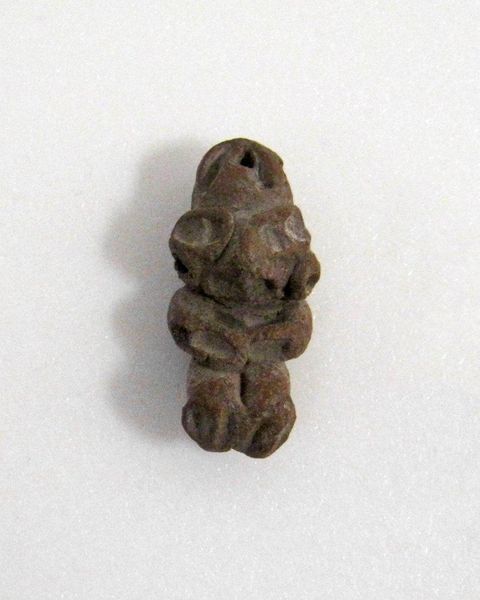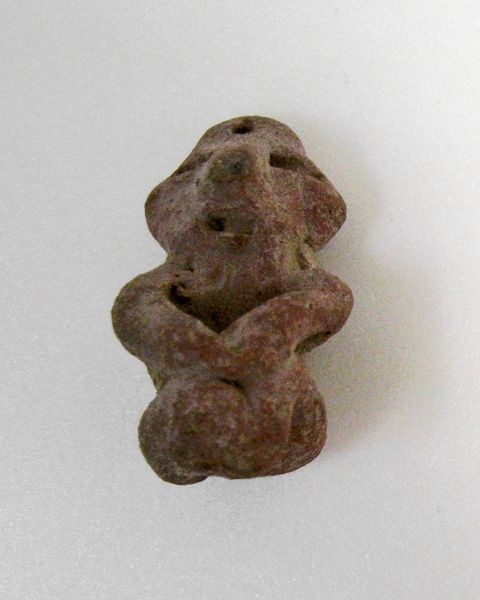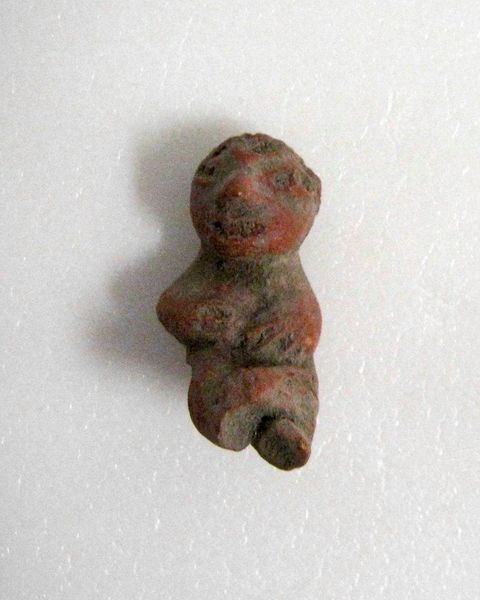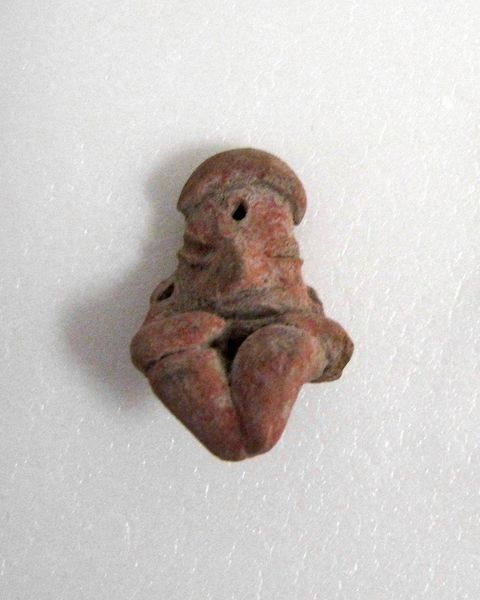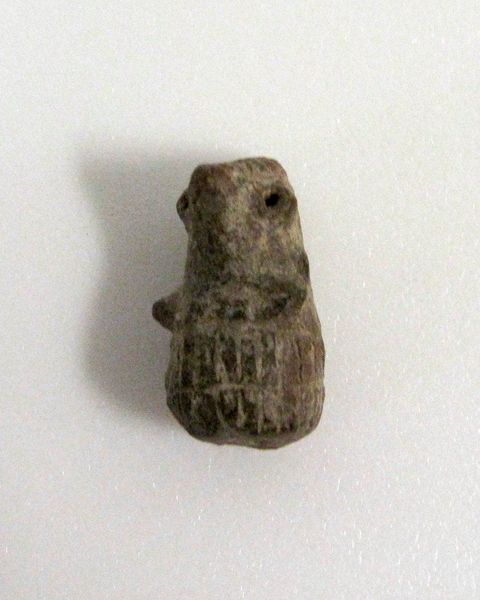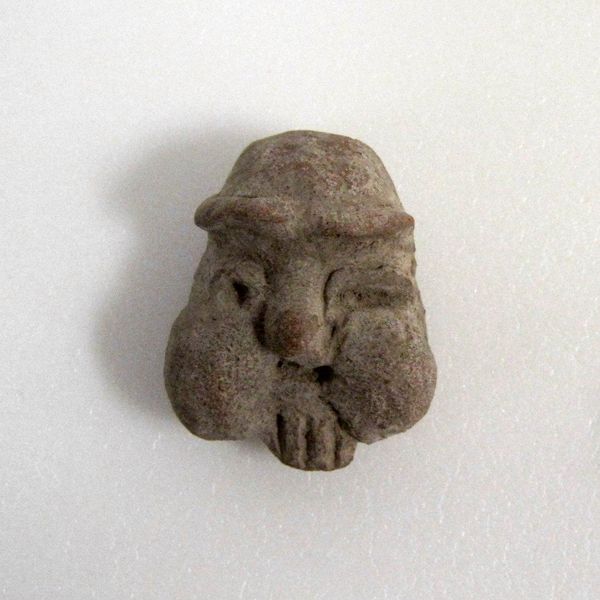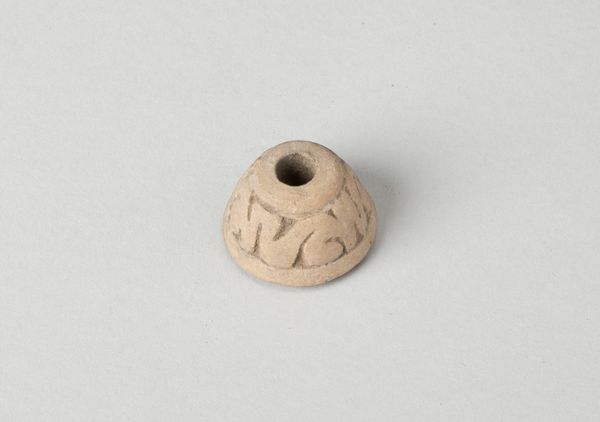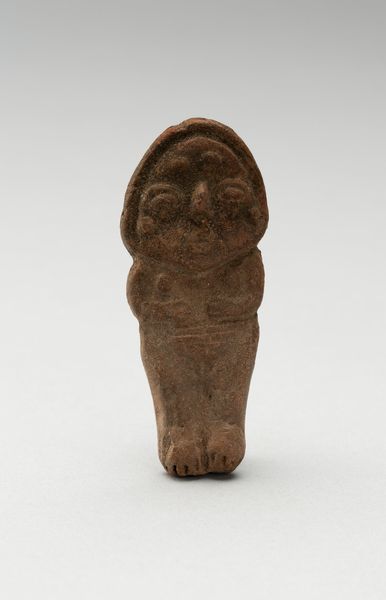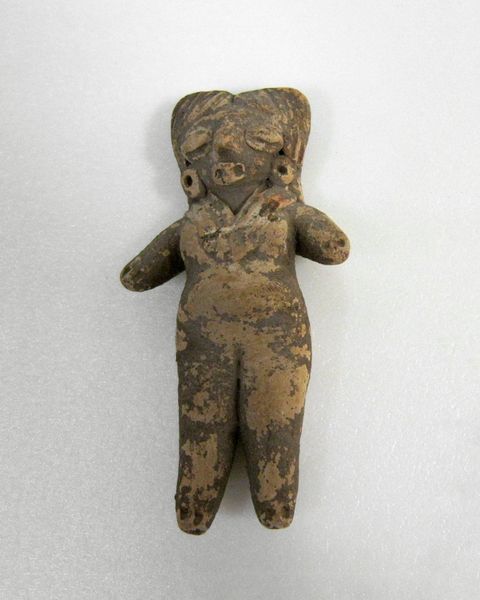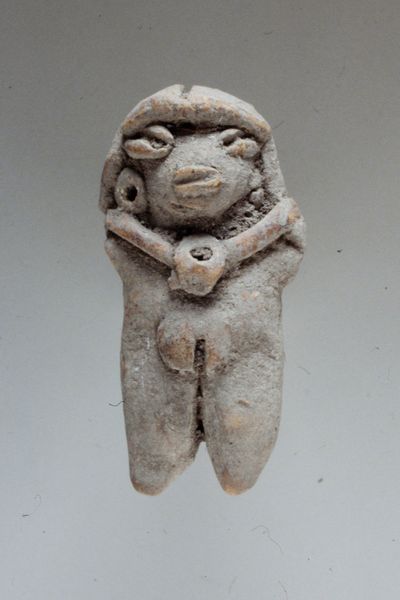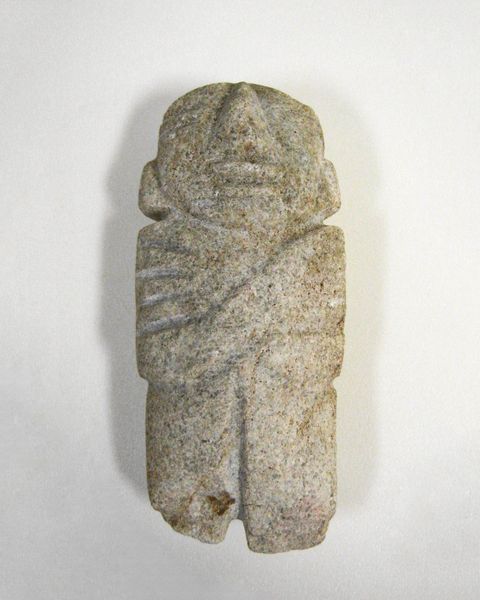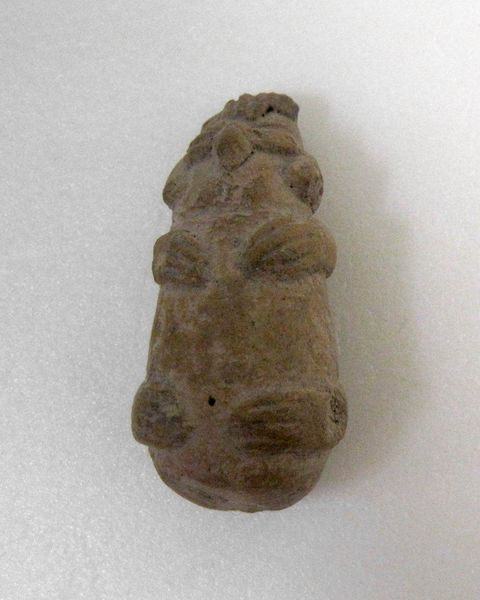
ceramic, earthenware, sculpture
#
sculpture
#
ceramic
#
figuration
#
earthenware
#
sculpture
Copyright: Public Domain
Editor: So, this earthenware miniature figurine, made by the Tlatilco people around 1500, has a rather unusual form, almost abstract in a way. What’s your take on it? What stands out to you? Curator: Its small size and the hole at the top suggest it was worn, perhaps as an amulet. Think about that closeness—this imagery accompanied someone throughout their life. What symbols might it carry, what psychological reassurance could it have offered? Editor: An amulet… it’s so stylized, I’m not even sure what it’s supposed to depict. Is it a human, or animal? Or both? Curator: Look at the bulbous forms; do they evoke anything for you? Perhaps an ancestor figure? These features recur across many indigenous American cultures and signify not just a physical representation, but a deep connection with ancestors and the earth. Note also how the artist simplified details. How does the abstraction affect the impact? Editor: I see what you mean about the ancestral connection. The simple forms also make it feel timeless, like it could be from any era. But it’s interesting that something so old can still evoke emotion. Curator: Precisely. And remember, symbols evolve, but the human need for them, for that connection to something larger than ourselves, remains constant. Editor: It gives me a whole new perspective, to consider that someone might have carried this around as a source of comfort or strength. Thanks for your insight! Curator: My pleasure! Thinking about those symbolic continuities is vital for interpreting older artwork.
Comments
No comments
Be the first to comment and join the conversation on the ultimate creative platform.
